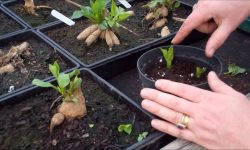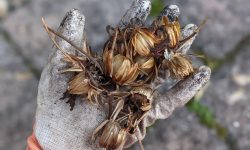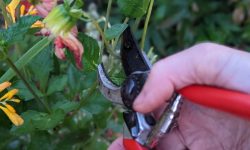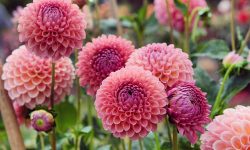Butterfly weed is a vibrant, low-maintenance plant that attracts butterflies, bees, and other pollinators. Its bright orange flowers add a striking color to any garden. Learning how to grow butterfly weed successfully ensures strong roots, healthy foliage, and abundant blooms for years to come.
This guide provides step-by-step advice for growing butterfly weed, from selecting seeds or seedlings to planting, caring, and troubleshooting common problems. Proper soil, sunlight, and watering are essential, as is seasonal care. Following these tips will help both beginner and experienced gardeners cultivate thriving plants that enhance biodiversity and create a colorful, pollinator-friendly garden environment.
Understanding Butterfly Weed
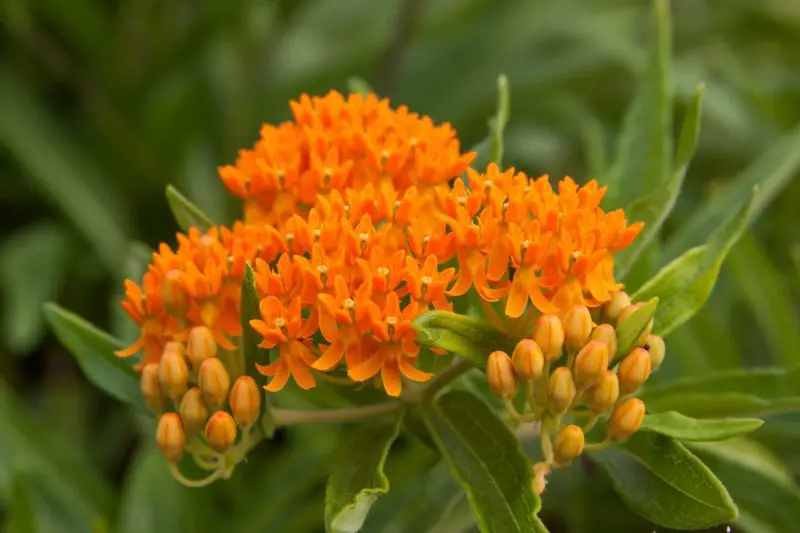
Butterfly weed, scientifically known as Asclepias tuberosa, is a native perennial prized for its vibrant orange flowers. This plant is highly drought-tolerant due to its deep taproot, making it suitable for a variety of climates and soil types. Thriving in full sun, it requires well-draining soil to prevent root rot and promote healthy growth. Understanding its natural growth habits is essential for gardeners who want consistent blooms and strong, resilient plants.
Propagation can be done through seeds or root division. Seeds are small and need light to germinate, which makes surface sowing critical. Cold stratification mimics winter conditions, improving germination rates significantly. Divisions, while less common, can establish quickly if handled carefully. The choice between seeds and divisions depends on the gardener’s experience, available space, and long-term goals for the garden. Young plants may take a season or more to flower, but once established, they provide reliable color and nectar for pollinators year after year.
Ecologically, butterfly weed plays a significant role. Its nectar-rich flowers attract butterflies, bees, and other pollinators, supporting local biodiversity. Additionally, it serves as a host plant for monarch butterfly caterpillars, making it a valuable addition to pollinator-friendly gardens. By understanding the plant’s growth needs, propagation methods, and ecological contributions, gardeners can cultivate strong, healthy butterfly weed plants that enhance both the aesthetic and environmental value of their outdoor spaces. Proper knowledge ensures long-term success and vibrant seasonal displays.
Selecting and Preparing Seeds
Choosing high-quality seeds is the first step in successfully growing butterfly weed. Purchase seeds from reputable suppliers to ensure viability and true-to-type plants. Inspect each seed carefully, avoiding any that appear shriveled, discolored, or damaged. Healthy seeds improve germination rates and produce strong seedlings capable of thriving in the garden. Proper seed selection lays the foundation for robust plants with abundant blooms.
Preparing seeds correctly can significantly increase germination success. Butterfly weed seeds benefit from cold stratification, which mimics natural winter conditions. Place seeds in a moist paper towel or a container filled with damp sand for four to six weeks. This process breaks dormancy, encouraging quicker and more uniform sprouting. Skipping stratification may result in delayed germination or low success, making it harder for gardeners to establish young plants.
Planting requires careful handling to protect fragile seeds. Sow seeds on the surface of a well-draining soil mix, pressing lightly to ensure contact without burying them too deep. Keep the soil consistently moist but not waterlogged, and provide indirect sunlight until seedlings emerge. Once sprouts are strong and several inches tall, gradually acclimate them to full sun exposure. Proper selection, preparation, and planting of seeds are critical steps that ensure healthy, vigorous butterfly weed plants ready to thrive in garden beds or containers.
Planting Butterfly Weed in Garden Beds
Planting butterfly weed in garden beds begins with choosing the right location. The plant thrives in full sun and requires well-draining soil to avoid root rot. Avoid low-lying areas where water may collect. Preparing the soil by loosening it and removing weeds helps young plants establish quickly. Adding a small amount of compost can enrich the soil without overwhelming the plant with excessive nutrients.
Spacing is an important consideration for healthy growth. Butterfly weed spreads naturally and needs adequate room for air circulation. Planting seedlings or young plants about 12 to 18 inches apart reduces competition for light and nutrients. Proper spacing also minimizes the risk of fungal infections and promotes strong, upright growth. Once planted, water the new plants thoroughly to help roots settle and to reduce transplant shock.
After planting, ongoing care is crucial for establishment. Apply a thin layer of mulch around the base to retain moisture and regulate soil temperature. Monitor water levels regularly, ensuring the soil remains damp but not waterlogged. Providing protection from strong winds or sudden temperature fluctuations during the first few weeks supports root development. With proper location, spacing, and initial care, butterfly weed quickly establishes itself, producing vibrant flowers that attract butterflies and other pollinators to the garden.
Caring for Young Butterfly Weed Plants
Caring for young butterfly weed plants is essential to ensure strong root development and healthy growth. Consistent watering helps establish deep roots, but overwatering should be avoided to prevent rot. The soil should remain evenly moist, particularly during the first few weeks after planting. Bright, indirect sunlight initially protects tender leaves while allowing the plant to acclimate to outdoor conditions.
Pruning is important even in young plants. Removing weak or damaged stems encourages energy to focus on strong branches. This early shaping helps the plant grow upright and sturdy, reducing future maintenance. Fertilization should be light at this stage. A balanced, slow-release fertilizer provides essential nutrients without overstimulating leafy growth at the expense of root development.
Monitoring for pests and diseases is critical for young plants. Caterpillars, aphids, and fungal issues can damage leaves and stunt growth. Regular inspection allows timely intervention, ensuring plants remain healthy. Mulching around the base of the plant helps retain soil moisture, suppress weeds, and regulate temperature. With consistent care, young butterfly weed plants establish quickly, develop vibrant foliage, and prepare for future blooms, creating a solid foundation for a thriving, colorful garden.
Watering and Fertilization Tips for Butterfly Weed
Proper Watering Practices
Watering butterfly weed correctly is crucial for establishing healthy roots and promoting vibrant blooms. Newly planted seedlings require consistent moisture to develop strong roots, but the soil should never become waterlogged. Overwatering can lead to root rot, while underwatering slows growth and weakens the plant. Using a soaker hose or drip irrigation helps maintain even soil moisture while minimizing wet foliage that can encourage fungal diseases.
Monitoring the soil regularly allows gardeners to adjust watering according to weather and seasonal conditions. During hot, dry periods, increase watering frequency slightly, while in cooler or rainy periods, reduce it to prevent saturation. Mulching around the base of the plant further helps retain moisture, regulates soil temperature, and reduces evaporation. Proper watering ensures that young and mature butterfly weed plants remain healthy and resilient throughout the growing season.
Fertilization Guidelines
Fertilizing butterfly weed supports steady growth and abundant flowering, but it must be done carefully. Young plants require only light feeding to encourage root development without overstimulating leafy growth. Using a balanced, slow-release fertilizer or a diluted liquid fertilizer provides essential nutrients while avoiding chemical stress on tender roots.
Established plants benefit from occasional fertilization during the growing season to sustain vigorous flowering. Phosphorus-rich fertilizers can stimulate bloom production, while nitrogen should be moderate to prevent excessive foliage. Regularly monitoring plant health allows adjustments in fertilizer type and frequency. Proper fertilization, combined with correct watering, ensures robust growth, strong stems, and vibrant flowers that attract butterflies and enhance the garden’s visual appeal.
Seasonal Care for Butterfly Weed
Spring Care
Spring is a critical season for butterfly weed as plants emerge from dormancy and begin new growth. Start by inspecting the garden bed for any winter damage or debris, and remove dead stems to make room for fresh growth. Consistent watering is essential, ensuring the soil remains moist but well-drained. Newly emerging plants benefit from gentle fertilization with a balanced or slow-release formula to support root and stem development without overwhelming tender shoots.
Early pruning encourages strong, upright growth and prevents overcrowding. Monitor for pests such as aphids or caterpillars, which can damage young leaves. Using mulch around the base helps retain moisture, regulate soil temperature, and suppress weeds. Providing these seasonal adjustments during spring ensures healthy development and prepares butterfly weed for a productive flowering season. Gradual acclimation to full sun is also important for young plants, helping them thrive as temperatures rise.
Summer Care
During summer, butterfly weed requires full sun and regular moisture to support vigorous growth and abundant blooms. Water deeply during dry spells while avoiding waterlogging, which can damage roots. Mulching continues to conserve soil moisture and maintain consistent root temperature. Fertilization can be slightly increased to promote flowering, with phosphorus-rich fertilizers enhancing bloom quality.
Observe plants for signs of stress from heat or drought. Inspect leaves for pests or fungal issues, taking prompt action if necessary. Deadhead spent flowers to encourage continuous blooming. Providing consistent care during the hot months ensures that butterfly weed maintains strong stems, vibrant flowers, and a healthy appearance. Proper summer care helps maximize nectar production, attracting butterflies and pollinators throughout the season.
Autumn and Winter Care
Autumn and winter require a shift in care to protect plants from cold stress and prepare them for dormancy. Reduce watering to prevent root rot during cooler months and avoid fertilization. Applying a layer of mulch around the base insulates roots and regulates soil temperature against frost.
Light pruning removes dead or damaged stems while maintaining plant structure. If grown in containers, consider moving them to sheltered areas or indoors to avoid frost damage. Monitoring for pests and diseases remains important, as young plants are more vulnerable during seasonal changes. These adjustments ensure butterfly weed survives winter successfully, develops strong roots, and is ready for healthy growth and flowering in the following spring.
Common Problems and Troubleshooting
Pest Infestations
Butterfly weed attracts many beneficial insects, but it can also fall prey to pests like aphids, caterpillars, and leafhoppers. Aphids feed on plant sap, causing curling or yellowing leaves, stunted growth, and sometimes the spread of viral diseases. Caterpillars, including monarch larvae, feed on the foliage, which can reduce overall plant vigor if populations are high. Leafhoppers may also damage young plants by sucking sap and transmitting pathogens. Early detection is crucial to prevent significant harm to both young and mature plants.
Gardeners can manage pests using a combination of cultural and biological methods. Regular monitoring allows timely intervention. Manual removal of small infestations is effective, and introducing natural predators such as ladybugs, lacewings, and parasitic wasps can help keep aphid populations under control. Avoid broad-spectrum chemical insecticides, as these can harm pollinators, including butterflies and bees. Using targeted, environmentally friendly treatments ensures the health of butterfly weed while maintaining its ecological benefits and providing a safe haven for pollinators.
Disease Management
Fungal and bacterial diseases can affect butterfly weed, especially in humid environments or poorly drained soils. Leaf spot, powdery mildew, and root rot are common problems. Symptoms include discolored, wilted, or spotted leaves, fuzzy growth, stunted growth, and mushy roots. These issues often arise when water remains on foliage for extended periods or soil does not drain well, stressing the plant and allowing pathogens to establish.
Preventive measures are essential for disease management. Space plants to promote good air circulation and avoid overhead watering that keeps foliage wet. Remove any infected leaves promptly and dispose of them away from the garden to prevent the spread of spores. Using sterilized tools during pruning and planting in well-draining soil reduces contamination risks. Regular monitoring, combined with proper cultural practices, helps maintain plant health, encourages strong root development, and ensures consistent flowering throughout the growing season.
Environmental Stress
Butterfly weed is hardy but can be affected by environmental stressors. Extreme heat, prolonged drought, sudden temperature fluctuations, or inadequate sunlight can cause wilting, leaf drop, slowed growth, and reduced flowering. Overcrowding or poor soil conditions may exacerbate these effects, weakening the plant and making it more vulnerable to pests and diseases.
To mitigate stress, provide consistent watering, especially during dry spells, and ensure full sun exposure for at least six hours daily. Mulching helps retain soil moisture, moderates temperature, and suppresses weeds, reducing competition for nutrients. Gradually acclimate young or newly propagated plants to outdoor conditions to avoid shock. Adequate spacing, proper soil preparation, and attention to seasonal changes support healthy growth, strong roots, and vibrant blooms. Managing environmental factors effectively allows butterfly weed to thrive and attract pollinators throughout the growing season.
Encouraging Pollinator Visits
Butterfly weed is naturally attractive to a wide variety of pollinators, including butterflies, bees, and hummingbirds. Its bright orange flowers are rich in nectar, providing an essential food source for these creatures. Strategically planting butterfly weed in sunny locations with minimal wind exposure increases flower visibility and accessibility, making it easier for pollinators to locate and feed on the blooms. Planting in clusters rather than as single specimens further enhances attractiveness and encourages repeated visits.
Maintaining plant health is crucial for sustaining pollinator activity. Healthy, vigorous plants produce abundant, long-lasting flowers, ensuring a consistent nectar supply throughout the season. Avoid using chemical pesticides or herbicides, which can harm or repel beneficial insects. Instead, opt for organic methods or introduce natural predators to control pests. Deadheading spent flowers encourages continuous blooming, which keeps pollinators returning and increases pollination efficiency for nearby plants, contributing to overall garden biodiversity.
Creating a pollinator-friendly environment extends beyond planting butterfly weed alone. Incorporate a variety of nectar-rich plants that bloom at different times to provide food sources throughout the growing season. Adding shallow water sources or butterfly puddling areas supports pollinator hydration and reproductive activity. By combining strategic planting, proper care, and supportive garden features, gardeners can maximize pollinator visits. This not only benefits butterfly weed but also strengthens the surrounding ecosystem, promoting a thriving, sustainable, and visually vibrant garden space that supports both plant and wildlife diversity.
Harvesting and Seed Saving
Harvesting Seeds
Harvesting butterfly weed seeds at the right time is essential for successful propagation. Seed pods usually mature in late summer or early fall, turning brown and beginning to split naturally. Collecting seeds too early can result in poor germination, so wait until the pods are fully dry on the plant. Gently remove the pods to avoid spilling seeds, and handle them with care to preserve their viability.
Once harvested, check the pods for signs of damage or mold. Avoid any that appear shriveled or compromised, as these seeds are unlikely to sprout. Storing seeds in a cool, dry environment immediately after collection helps maintain quality. Proper harvesting techniques ensure gardeners have healthy seeds ready for future plantings and support sustainable propagation of butterfly weed.
Preparing and Storing Seeds
After harvesting, preparing and storing seeds properly improves germination success. Break open the dried pods carefully and separate the seeds from the silky floss. This prevents the fluff from interfering with sowing and ensures only viable seeds are kept. Store seeds in paper envelopes or glass jars with silica gel packets to maintain dryness and prevent mold growth. Avoid plastic bags, as trapped moisture can compromise seed quality.
Before planting, cold stratification can be applied to mimic winter conditions and break seed dormancy. Place seeds in a moist medium for several weeks to encourage uniform sprouting. Once stratified, sow seeds on the surface of well-draining soil, keep them evenly moist, and gradually acclimate seedlings to outdoor conditions before transplanting. Proper preparation and storage create a sustainable cycle of propagation, ensuring vibrant blooms and healthy butterfly weed plants year after year.
Companion Plants for Butterfly Weed
Planting butterfly weed alongside suitable companion plants enhances growth, soil health, and garden aesthetics. Flowers such as coneflowers, black-eyed Susans, and liatris complement butterfly weed with similar sunlight and soil requirements. These companions attract additional pollinators and beneficial insects, creating a vibrant, balanced ecosystem. Placing compatible plants nearby also helps reduce competition and improves air circulation, lowering the risk of fungal diseases.
Companion planting can also benefit garden resilience. Plants with deeper roots or nitrogen-fixing abilities enrich the soil for butterfly weed, promoting stronger roots and better nutrient absorption. Tall companion plants can provide partial shading for young seedlings during hot summer afternoons, preventing heat stress. This cooperative planting strategy encourages healthy growth while maintaining visual appeal.
Selecting companions strategically enhances both biodiversity and aesthetics. Seasonal rotation and a mix of flower colors extend bloom periods, ensuring continuous food for pollinators. By thoughtfully pairing butterfly weed with supportive plants, gardeners can create thriving, low-maintenance gardens that attract butterflies, bees, and other wildlife while maintaining long-term plant health.
Container Gardening with Butterfly Weed
Butterfly weed thrives in containers, offering flexibility for small gardens, patios, or balconies. Choose deep pots to accommodate the taproot and ensure proper drainage to prevent waterlogging. Use high-quality, well-draining potting soil and place containers in full sun for at least six hours daily. Proper container selection ensures healthy roots and abundant flowering.
Watering and fertilization are critical in container gardening. Containers dry out faster than garden beds, so check soil moisture regularly. Mulching the surface retains water and moderates temperature. Fertilize lightly with a balanced, slow-release formula to encourage strong growth without overstimulating foliage. Regular monitoring for pests and diseases ensures plants remain healthy in a confined environment.
Container gardening also allows seasonal adjustments. Move pots to sheltered areas during extreme heat or frost to protect plants. Deadhead spent flowers to encourage continuous blooming. With attentive care, container-grown butterfly weed offers the same vibrant blooms and pollinator benefits as in-ground planting, providing gardeners with versatile and beautiful options for limited spaces.
Butterfly Weed for Wildlife Gardens
Butterfly weed plays a vital role in wildlife gardens, attracting butterflies, bees, hummingbirds, and other pollinators. Its nectar-rich flowers provide essential food sources, while leaves serve as host material for monarch caterpillars. Incorporating butterfly weed into wildlife-friendly gardens increases biodiversity and supports local ecosystems.
Healthy plants enhance habitat value. Continuous blooms ensure consistent nectar supply throughout the season. Avoid pesticides to maintain safe conditions for pollinators. Pairing butterfly weed with other nectar-rich plants extends bloom periods and encourages diverse wildlife visitation, creating a dynamic and lively garden environment.
Gardening with butterfly weed also benefits long-term ecological balance. Supporting pollinators contributes to successful pollination of other garden plants and nearby crops. By incorporating butterfly weed thoughtfully, gardeners create beautiful, functional spaces that support wildlife, promote biodiversity, and maintain sustainable, thriving ecosystems.
FAQ About How to Grow Butterfly Weed
What is the best time to plant butterfly weed seeds?
The best time to plant butterfly weed seeds is in early spring after the last frost. Cold stratification of seeds beforehand improves germination. Ensure soil is well-draining and sunny. Plant seeds on the soil surface and keep evenly moist until seedlings emerge. Gradually acclimate young plants to full sun for optimal growth.
How much sunlight does butterfly weed need?
Butterfly weed thrives in full sun, requiring at least six hours daily. Adequate sunlight encourages strong stems, abundant blooms, and vibrant orange flowers. Partial shade may reduce flowering and weaken growth. Choosing a sunny location ensures the plant attracts pollinators and develops deep roots, promoting long-term health and resilience in the garden.
How often should I water butterfly weed?
Water young plants regularly to establish deep roots, keeping soil evenly moist but not waterlogged. Established plants are drought-tolerant, needing occasional watering during dry periods. Mulching helps retain moisture and moderates soil temperature. Avoid overwatering, as this can cause root rot and reduce plant vigor, ensuring healthy, strong butterfly weed growth.
Can I grow butterfly weed in containers?
Yes, butterfly weed can thrive in containers if planted in well-draining soil and placed in full sun. Containers should be deep enough to accommodate the taproot. Regular watering and occasional fertilization support growth. Mulching the surface conserves moisture, and protecting containers from extreme cold during winter ensures the plant survives and blooms year after year.
How do I attract more butterflies to my garden?
To attract butterflies, plant butterfly weed alongside other nectar-rich flowers with staggered bloom times. Provide full sun, shallow water sources, and sheltered areas for resting. Avoid chemical pesticides that harm pollinators. Healthy, vibrant blooms and a pollinator-friendly environment encourage butterflies to visit consistently, supporting the ecosystem while enhancing your garden’s beauty.
Conclusion
Growing butterfly weed successfully requires understanding its needs, from seed selection to seasonal care. Providing full sun, well-draining soil, and proper watering ensures strong roots and vibrant blooms. Monitoring for pests, managing environmental stress, and encouraging pollinators enhances garden health. Harvesting and saving seeds allows sustainable propagation, creating a continuous cycle of thriving plants. By following these steps, gardeners can enjoy a colorful, pollinator-friendly garden year after year while supporting biodiversity and fostering a vibrant, resilient outdoor space full of life and beauty.

